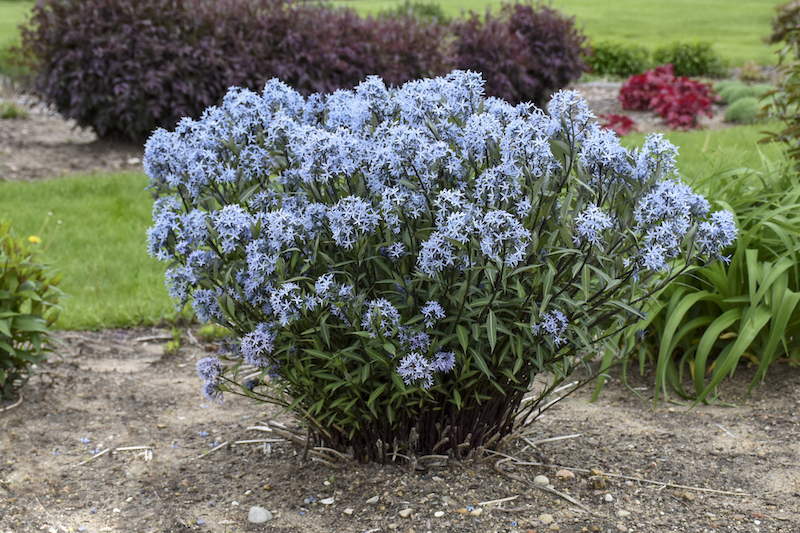All varieties of Amsonia are hardy perennials that are relatively drought resistant once well established. This North American native plant thrives in open meadows and bright forest locations all over the South and Southeast of the United States, preferring soils that stay moderately moist but well draining. Recreating these conditions is easily done with annual mulching of the plants with organic material and using soaker hoses or drop irrigation to establish newly planted perennials.

How To Tell If Amsonia Needs To Be Watered
Most plants have telltale symptoms of underwatering. Drooping stems, leaves, or flowerheads are a dead giveaway that supplemental watering is needed. Amsonia will show the same signs, although when the plant is located in too shady a location, the plant will naturally grow floppier, which sometimes can be mistaken for a lack of moisture in the soil.
How Often To Water Amsonia
Newly planted Amsonia requires consistent watering for at least the first growing season. Allow for one inch of water, either natural rainfall or supplemental irrigation, each week to support good plant and root growth. Water approximately 2-3 times a week to allow the soil to dry slightly between sessions. Watering with more efficient soaker hoses or drip irrigation ensures that water goes directly to the root zone with little evaporation. Mulch with finely shredded leaves or arborist chips to help cool the soil and aid in moisture retention during the warmer summer months.
Watering can usually be reduced in the following seasons after the plant has established and matured. Once a week, check for moisture in the soil, and water if the top layer feels dry. If there is any drooping or yellowing of the leaves, supplemental watering may be necessary. Continue mulching annually around the root zone. As the mulch breaks down, it will enrich the soil and continue to cool the root zone during hot periods.
Amsonia growing in containers will require watering on a more regular schedule. Depending on the size of your container, watering may be needed every 1-2 days during the summer. Allow the top 2 inches of potting mix to dry between watering, so that the roots remain healthy. Remember that smaller pots dry out much faster than large planters.
Best Time To Water Amsonia
Perennials should be watered early in the day, while the soil is still cool from nighttime temperatures. Cooler soil accepts and retains moisture longer than dry soil. Overhead watering is discouraged for Amsonia because it can contribute to fungal diseases. If overhead watering is the only option, watering early in the day will allow wet foliage to dry fully before temperatures drop in the evening. Supplemental watering may be needed in the fall and winter if daytime temperatures remain above 45 degrees F.
How to Water Amsonia
Step 1 - Use drip irrigation or soaker hoses.
Keep the foliage as dry as possible to protect Amsonia from fungal diseases.
Step 2 - Allow one inch of water a week for newly planted Amsonia.
Watering about 2-3 times a week keeps the soil consistently moist and allows for some drying between waterings.
Step 3 - Container grown plants require more frequent watering.
Allow the top 1-2 inches of potting mix to dry before giving the container a long soak.
Step 4 - Mulch annually in the sporing with organic material.
The decomposing material will enrich the soil over time, increasing moisture retention and cooling the root system during the summer.
Amsonia Watering Tips
- One inch of water a week, ~1 gallon
- Include natural rainfall in the one-inch-a-week rule
- Mulch annually with 2-3 inches of organic material
- Avoid wetting the foliage by using soaker hoses or drip irrigation
 |
Author Robbin Small - Published 6-06-2023 |
